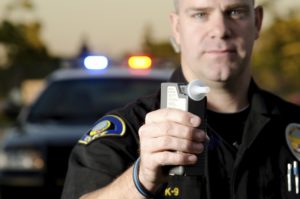Was the breathalyzer in my DUI case operating properly?

A breathalyzer device is a machine, and like all machines, they are only as accurate as they are designed to be, and are subject to input errors (garbage in, garbage out), and, like any measurement device, has a margin of error.
In California, the allowed margin of error for any admissible device is a .02. That means that a test result that is a .08 could be as low as a .06%, or as high as a .12%, and still be considered to be an accurate reading. One breath testing company we know has advertised the accuracy of their device to be within a 0.05 margin of error. In other words, someone who blows a 0.08 might be as high as a 0.13 or as low as a 0.03. This is the difference between being highly intoxicated and having less than one glass of wine for some.
Orange County DUI Breathalyzers – The Alcosensor IV
The Alcosensor IV is the current breath machine used in most DUI cases in Orange County. It is soon scheduled to be replaced by a newer machine, the Alcosensor V. Known issues with the Alcosensor IV include any, or all, of the following:
- Floating Decimal Point – The breath test results are .224 and .228 while state blood draw hour later is .014. If you just move the decimal point, then one hour earlier (when breath test occurred) the driver could actually have had a .0224 and .0228 breath alcohol reading. This result would comport with the possible parameters of alcohol metabolism. Orange County DUI tests are required
- Problems with temperature. Breath testing devices are highly sensitive to temperature, and as you can expect, there is a wide variety of temperature conditions in the field.
- Contamination. This can be breath contamination, or contamination in the device.
- Software extrapolation (algorithm integration problem ).
- High calibration – check simulator solution or dry gas and regulators, true calibration problems.
- Software degradation – Software ages and get corrupted with time or self-imposed degradation. This does happen and might have occurred on any unit.
- Plunger problems and carryover contamination. This occurs with heavily used machines.
Acetone DUI Breath Contamination.
Acetones can provide a false positive for DUI, which can happen in any of the following cases:
- Inhalation of Paint or Glue Fumes
- Inhaling Lacquer Fumes
- Swallowing Unleaded Gasoline
- Bread Products of various types
- Untreated Diabetics
- Persons on a Weight Reduction Diet (especially ketogenic or Atkins type diets)
- Fasting
- Alcoholism, which can create acetaldehyde in breath or blood;
- Long-term smoking – smokers are more likely to have higher blood-alcohol readings due to a greater amount of acetaldehyde in the lungs.
Programming and Software Errors with Breath Devices
Software errors in the programming of devices can also be a problem with breath testing machines, and often are discovered well after the machine has been in use for some time.
Contamination and Interference with Breath Testing Machines
Most machine manufacturers ask police to have testing subjects wait at least 20 minutes to blow after eating, drinking, or smoking. Under California Law, tests are required to have a waiting period of 15 minutes before starting. Breath machine manufacturers admit that cologne, perfume, hand sanitizer, and toothpaste can result in breath test false positives. Users are warned not to conduct the test in any place where radio interference from other electrical devices, or radio transmissions, might affect the breath device.
Contact us if you have any questions about if a breath machine used in your DUI is accurate. We are the top choice for Orange County DUI Lawyers.
